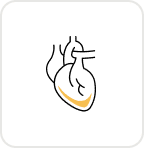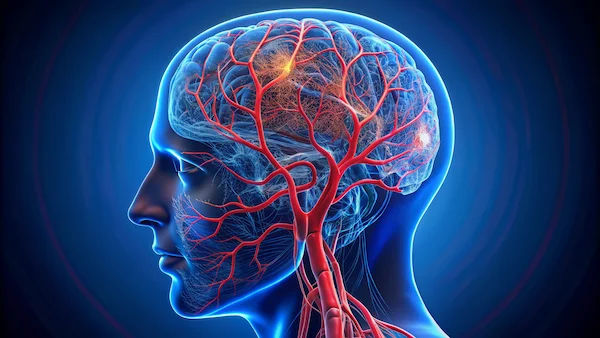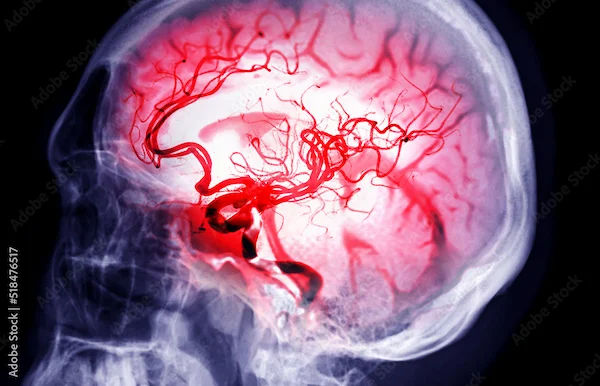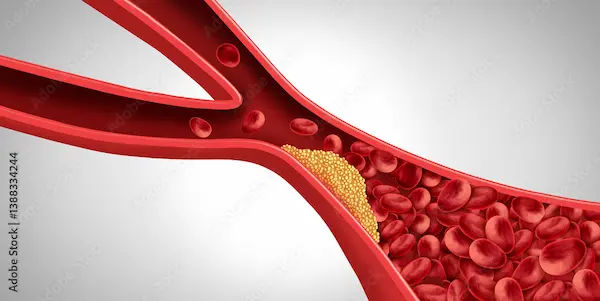Brain Bleed vs. Brain Clot: Your Guide to Haemorrhagic Stroke
Learn the differences between brain bleeds and blood clots in this guide to haemorrhagic stroke. Understand causes, symptoms, treatment, and prevention tips.

Written by Dr. M L Ezhilarasan
Reviewed by Dr. Dhankecha Mayank Dineshbhai MBBS
Last updated on 29th Sep, 2025

Introduction
A sudden, severe headache, the worst of your life. Weakness on one side of your body. Slurred speech. These are terrifying signs that something is critically wrong inside the brain, the body's command centre. Often, the cause is a stroke, a medical emergency where blood flow to a part of the brain is disrupted. But not all strokes are the same. Understanding the crucial difference between a haemorrhagic stroke (a brain bleed) and an ischaemic stroke (a blood clot in the brain) can be a matter of life and death. This guide will demystify these conditions, explaining their causes, symptoms, and the urgent treatments needed. Our goal is to empower you with knowledge, because when it comes to stroke, every second counts for preserving brain function and saving lives.
The Fundamental Difference: A Clogged Pipe vs. A Burst Pipe
Think of your brain's blood vessels as a complex network of pipes. A stroke occurs when this network fails. The nature of that failure defines the type of stroke.
What is an Ischaemic Stroke (Brain Clot)?
An ischaemic stroke is like a clogged pipe. It accounts for about 87% of all strokes. It happens when a blood clot blocks an artery supplying blood to the brain. This clot can form directly in the brain's arteries (thrombotic stroke) or travel from elsewhere in the body, such as the heart, and lodge in a narrower brain artery (embolic stroke). Without oxygen-rich blood, brain cells begin to die within minutes.
What is a Haemorrhagic Stroke (Brain Bleed)?
A haemorrhagic stroke, on the other hand, is like a pipe that has burst. It occurs when a weakened blood vessel leaks or ruptures, causing bleeding into the surrounding brain tissue. This bleeding (haemorrhage) compresses the delicate brain structures, causing damage both from the lack of blood flow to downstream areas and from the increasing pressure inside the skull. There are two main types:
- Intracerebral Haemorrhage: The most common type of haemorrhagic stroke, where bleeding occurs directly within the brain tissue.
- Subarachnoid Haemorrhage: Bleeding into the space between the brain and the thin tissues that cover it.
Consult a Neurologist for the best advice
Recognising the Red Flags: Symptoms of a Brain Haemorrhage
Time is brain. Recognising the signs of a haemorrhagic stroke quickly is crucial. While symptoms can overlap with ischaemic strokes, some may be more pronounced.
The FAST Acronym: A Universal Warning Sign
Use the FAST test to identify common stroke symptoms:
- Face: Ask the person to smile. Does one side of the face droop?
- Arms: Ask them to raise both arms. Does one arm drift downward?
- Speech: Ask them to repeat a simple phrase. Is their speech slurred or strange?
- Time: If you observe any of these signs, call emergency services immediately. Note the time when symptoms first appeared.
Additional Symptoms Specific to a Bleed
A haemorrhagic stroke can also cause:
- A sudden, extremely severe headache, often described as a "thunderclap" headache.
- Nausea and vomiting.
- Seizures.
- Sensitivity to light (photophobia).
- Loss of consciousness or fainting.
- Neck stiffness (more common in subarachnoid haemorrhage).
If you or someone near you experiences a sudden severe headache along with any other stroke symptoms, do not wait. Seek emergency medical help instantly.
What Causes a Blood Vessel to Burst in the Brain?
A blood vessel doesn't rupture without reason. It's typically weakened over time by specific conditions.
Primary Causes of Haemorrhagic Stroke
Haemorrhagic strokes often stem from underlying health conditions or sudden blood vessel damage; knowing the causes can help in prevention.
Uncontrolled High Blood Pressure (Hypertension)
This is the leading cause of intracerebral haemorrhage. Chronic high pressure stresses artery walls, making them stiff, narrow, and prone to cracking. Managing blood pressure is the single most important step in preventing a brain haemorrhage.
Cerebral Amyloid Angiopathy (CAA)
This condition involves the buildup of amyloid protein in the walls of the brain's arteries, which weakens them. CAA is more common in older adults and can cause recurrent bleeds.
Aneurysms and Arteriovenous Malformations (AVMs)
An aneurysm is a balloon-like bulge in a blood vessel that can rupture under pressure.
An AVM is a tangled web of abnormal blood vessels connecting arteries and veins, which are fragile and susceptible to bleeding.
Key Risk Factors You Can and Cannot Control
Controllable: High blood pressure, smoking, excessive alcohol use, obesity, use of blood-thinners (anticoagulants).
Uncontrollable: Age (risk increases after 55), family history of stroke or aneurysms, certain genetic conditions.
How is a Brain Haemorrhage Diagnosed?
In the emergency room, speed is critical. The primary tool to distinguish a brain bleed from a clot is a CT (Computed Tomography) scan. This imaging test can quickly reveal bleeding in the brain. In some cases, an MRI (Magnetic Resonance Imaging) may provide more detailed images. An angiogram (injecting dye into blood vessels) might be used to identify the source of the bleeding, such as an aneurysm or AVM. If your condition is complex, the emergency team may consult a neurologist from a network like Apollo24|7 for a specialist opinion to guide the diagnosis.
Emergency Treatment: Stopping the Bleed and Reducing Pressure
Treatment for a haemorrhagic stroke focuses on controlling the bleeding and reducing pressure on the brain. This is fundamentally different from treating a clot, where clot-busting drugs are used.
Medications to Reverse Clotting
If the patient is taking blood thinners like warfarin, medications or transfusions may be given to counteract their effects and encourage clotting at the bleed site. Drugs may also be administered to lower very high blood pressure.
Surgical Interventions
Surgery may be necessary to repair the damaged blood vessel and relieve intracranial pressure.
- Surgical Clipping: A surgeon places a tiny clamp at the base of an aneurysm to stop blood flow to it.
- Endovascular Coiling: A less invasive procedure where a catheter is threaded to the aneurysm, and platinum coils are inserted to block it off.
- Decompressive Craniectomy: In cases of severe swelling, a section of the skull may be temporarily removed to allow the brain to expand without being compressed.
The Road to Recovery: Life After a Haemorrhagic Stroke
Recovery is a marathon, not a sprint. The extent of recovery depends on the bleed's location and size, and how quickly treatment was received. Rehabilitation is multidisciplinary, involving:
- Physical therapy to regain movement and strength.
- Occupational therapy to relearn daily skills like dressing and eating.
- Speech-language therapy to address communication and swallowing problems.
- Long-term effects can include paralysis, difficulty speaking, memory loss, and emotional changes. Consistent follow-up with a healthcare team, which can be conveniently managed through platforms like Apollo24|7, is vital for monitoring progress and managing risk factors to prevent a recurrence.
Can a Haemorrhagic Stroke Be Prevented?
While not all strokes are preventable, you can dramatically reduce your risk by managing the factors within your control.
- Control Blood Pressure: This is the number one priority. Monitor it regularly and adhere to prescribed medications.
- Adopt a Heart-Healthy Lifestyle: Eat a diet low in saturated fat and salt, rich in fruits and vegetables.
- Exercise Regularly: Aim for at least 150 minutes of moderate-intensity activity per week.
- Limit Alcohol and Avoid Smoking.
- Manage Underlying Conditions: Properly manage diabetes, high cholesterol, and heart disease. For ongoing monitoring, Apollo24|7 offers a convenient home collection for tests like HbA1c and lipid profiles, helping you stay on top of your health.
Get Your Health Assessed
Conclusion
A haemorrhagic stroke is a severe, life-altering event, but knowledge is your greatest defence. Understanding the difference between a bleed and a clot empowers you to seek the right help immediately. Remember the FAST acronym, know your personal risk factors, and commit to a lifestyle that protects your brain's vascular health. Prevention through managing blood pressure and making healthy choices is the most powerful tool we have. If you have concerns about your stroke risk, especially if you have a family history or uncontrolled hypertension, don't hesitate to speak with a healthcare professional.
Consult a Neurologist for the best advice
Consult a Neurologist for the best advice

Dr. H Rahul
Neurologist
10 Years • MBBS, MD(Gen. Med.), DM(Neuro)
Secunderabad
Apollo Hospitals Secunderabad, Secunderabad
(100+ Patients)

Dr. Sathish Kumar V
Neurologist
16 Years • D.M Neurology (PGIMER, Chandigarh), • M.D General Medicine (GSVM Medical College, Kanpur )
Chennai
Apollo Speciality Hospitals OMR, Chennai
(200+ Patients)

Dr. Uddalak Chakraborty
Neurologist
8 Years • MBBS, MD(GENL.MED.),DM(NEUROLOGY)
Kolkata
MCR SUPER SPECIALITY POLY CLINIC & PATHOLOGY, Kolkata

Dr Kishalaya Karan
Neurologist
10 Years • MBBS(CAL), MD(MEDICINE), DM(NEUROLOGY)
Kolkata
Apollo Multispeciality Hospitals , Kolkata, Kolkata
(150+ Patients)
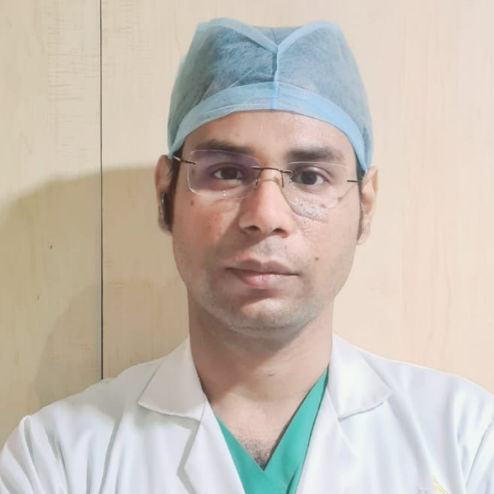
Dr Debnath Dwaipayan
Neurosurgeon
9 Years • MBBS, MS(Gen. Surgery), DrNB (Neurosurgery)
Delhi
Apollo Hospitals Indraprastha, Delhi
Consult a Neurologist for the best advice

Dr. H Rahul
Neurologist
10 Years • MBBS, MD(Gen. Med.), DM(Neuro)
Secunderabad
Apollo Hospitals Secunderabad, Secunderabad
(100+ Patients)

Dr. Sathish Kumar V
Neurologist
16 Years • D.M Neurology (PGIMER, Chandigarh), • M.D General Medicine (GSVM Medical College, Kanpur )
Chennai
Apollo Speciality Hospitals OMR, Chennai
(200+ Patients)

Dr. Uddalak Chakraborty
Neurologist
8 Years • MBBS, MD(GENL.MED.),DM(NEUROLOGY)
Kolkata
MCR SUPER SPECIALITY POLY CLINIC & PATHOLOGY, Kolkata

Dr Kishalaya Karan
Neurologist
10 Years • MBBS(CAL), MD(MEDICINE), DM(NEUROLOGY)
Kolkata
Apollo Multispeciality Hospitals , Kolkata, Kolkata
(150+ Patients)

Dr Debnath Dwaipayan
Neurosurgeon
9 Years • MBBS, MS(Gen. Surgery), DrNB (Neurosurgery)
Delhi
Apollo Hospitals Indraprastha, Delhi
More articles from Stroke
Frequently Asked Questions
Can a small brain haemorrhage heal on its own?
Yes, a very small bleed may stop on its own, and the body can slowly reabsorb the blood. However, even a small haemorrhage is a serious medical event that requires immediate evaluation to determine the cause and prevent a larger, more dangerous bleed in the future.
What are the long-term effects of a brain bleed?
Long-term effects vary widely but can include physical disabilities (weakness, paralysis), cognitive challenges (memory loss, difficulty concentrating), speech and language problems, and emotional changes like depression or anxiety. The extent of these effects depends on the area of the brain affected.
How is a haemorrhagic stroke different from a haemorrhagic transformation?
A haemorrhagic stroke is the primary event where a vessel bursts. haemorrhagic transformation is a complication that can occur after an ischaemic stroke (brain clot), where the damaged brain tissue begins to bleed.
What is the survival rate for a massive brain haemorrhage?
The survival rate depends on the bleed's size, location, and how quickly treatment is received. While a massive haemorrhage is often fatal, many people survive with prompt medical care. Early intervention is critical for improving outcomes.
Are there warning signs days before a haemorrhagic stroke?
Typically, haemorrhagic strokes strike suddenly without warning. However, in some cases, an aneurysm may leak a small amount of blood days or weeks before a major rupture, causing a 'sentinel headache,' which is a sudden, severe headache that should never be ignored.

